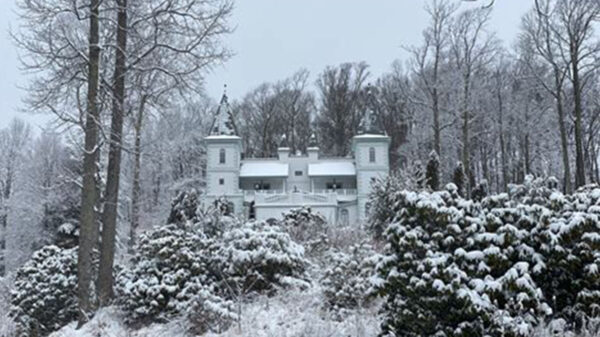UPDATE: A new book reveals the untold story behind Marilyn Monroe’s legendary subway grate photo, a moment that defined her status as a cultural icon. Released by the family of photographer Sam Shaw, the book titled “Dear Marilyn: The Unseen Letters and Photographs” uncovers the WWII roots of this famous image.
On September 15, 1954, crowds gathered at Lexington Avenue and 51st Street in New York City to witness the shoot for Monroe’s film, The Seven Year Itch. The scene, where a gust of wind lifts her white dress, has been immortalized as one of the most recognizable moments in film history.
Monroe’s friend and photographer, Sam Shaw, originally drew inspiration from photographs he took in 1941 while working as a photojournalist. He captured women’s skirts blowing in the breeze at Coney Island, an image that would resurface over a decade later during the filming of Monroe’s iconic scene.
Shaw’s granddaughter, Melissa Stevens, shared with Fox News Digital that Shaw had to navigate strict Hollywood censorship while filming the scene. “People may think today, ‘What’s the big deal about a woman with her skirt blowing up a little bit?’ Yet it was very controversial at the time,” she explained. The police were caught off guard by the overwhelming crowd, mesmerized by Monroe’s presence, as thousands arrived to see the blonde bombshell in action.
The scene was pivotal, not only for its impact on Monroe’s career but also for the changing landscape of women’s representation in film. Despite the modest portrayal of the moment in the final cut, backlash from groups like the Catholic Legion of Decency highlighted the era’s tensions around sexuality and censorship.
Stevens emphasized that the legendary moment came with personal cost for Monroe. During the shoot, her marriage to baseball star Joe DiMaggio was unraveling. Just weeks later, Monroe described her marriage as over, showcasing the duality of her public persona and personal struggles.
The book also reveals intimate letters from Shaw to Monroe, including one written shortly before her death in 1962. “You’re invited,” he wrote, offering her a place to stay, reflecting his deep concern for her well-being amidst the chaos of her life.
Stevens noted, “There’s a lot of difficulty in Marilyn Monroe’s life, but Sam referred to something called ‘the joy of Marilyn.’” This perspective provides a fresh view of Monroe as a figure of resilience rather than merely a victim of her circumstances.
As the 70th anniversary of The Seven Year Itch approaches, the revelations from this book are stirring renewed interest in Monroe’s legacy. Fans and historians alike are drawn to her story—an embodiment of the American dream. “She started with nothing, yet somehow, she rose to the top,” Stevens concluded, emphasizing the ongoing fascination with Monroe’s life and career.
This urgent update on Monroe’s enduring legacy is more than just a look back; it’s a reminder of the complexities of fame, identity, and the cultural shifts that continue to shape our understanding of icons like her.
Stay tuned for more developments on this story as it unfolds.






































































